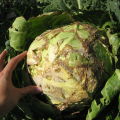Diseases and pests of white cabbage and the fight against them
Diseases and pests of cabbage can destroy the entire crop. To prevent a problem, you need to know the main signs, treatment methods and preventive measures. If infection is detected at an early stage, all plantings can be protected.
Fungal infection
Here are the most common diseases of cabbage seedlings and an adult plant, which you need to know how to prevent and start treatment on time when the first signs are found.
One of the common diseases is cabbage keel. The fungus affects only young seedlings of white cabbage planted in a greenhouse or open ground. The causative agent of keel is carried to cabbage beds by wind or rain, and insects can also spread.
Initially, root branches begin to be damaged. Growths appear on them, which interfere with the full absorption of moisture and necessary microelements. As a result, cabbage wilts and does not develop well.
It is easier to prevent an infection than to fight it. To do this, you need to strictly select seedlings, you do not need to plant weak seedlings. The soil where the cabbage is supposed to be planted must be disinfected. Regular watering, hilling, loosening and lime fertilizing will help prevent disease.
If an infection has been detected, then cabbage and other cruciferous vegetables cannot be planted on the site for 5-7 years. This is how long it takes for the activity of the infection to disappear.
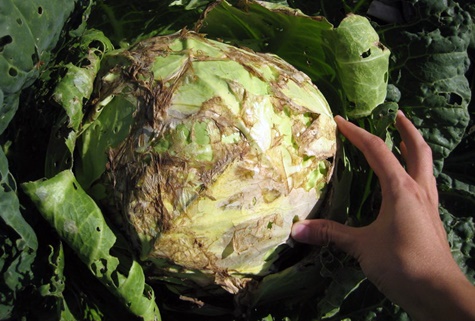
In the open field, cabbage can often be attacked by downy mildew (experts call the disease peronosporosis). The first symptoms of the disease include:
- the formation of light yellow spots on cabbage leaves;
- white bloom is observed on the inside of the cabbage leaf;
- leaves affected by the fungus wither, disappear;
- cabbage does not develop well.
The fungus is active in a humid environment. The infection spreads very quickly, so action is urgently needed. You can treat cabbage with drugs such as Fitoftorin or Bordeaux mixture. The drug Topaz shows a good result.
Preventive actions should consist in proper watering, soil disinfection, respecting the distance during transplanting seedlings. Another main condition is that cabbage cannot be planted in the same place for several years in a row. It is best to plant where previously harvested potatoes, beans or cucumbers.
Fusarium disease is considered common among cabbage. Fighting a fungal infection should not cause any difficulties, provided that the infection was detected in time. The first signs of the disease are:
- numerous yellow spots appear between leaf veins;
- gradually the entire surface of the cabbage leaf begins to turn yellow and as a result dries up;
- the head of cabbage is poorly and slowly formed, while the shape is deformed.
The disease is provoked by the lack of soil moisture and not too warm weather (below 18 degrees).
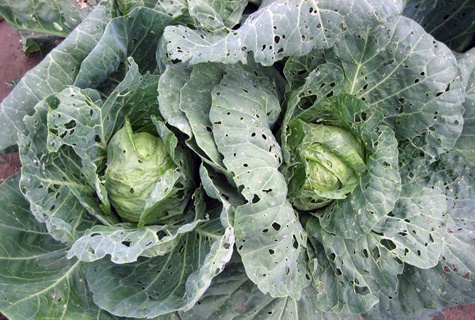
Diseased cabbage, along with roots and an earthen lump, should be removed from the garden. The remaining vegetables and soil must be disinfected. For this purpose, drugs Benomil, Topsin are used. You can use potassium permanganate or copper sulfate.
Another disease of cabbage is Alternaria or in another way called black spot. When infested, black spots appear on any part of the plant. As the disease spreads, the spots darken, and fungal plaque appears.
Black spot is spread by pests that overwinter in the remains of a vegetable crop and seeds. Therefore, it is so important to harvest the tops and dig up the soil after harvesting in the fall. Cabbage seeds must be disinfected and heat treated before planting.
Fungal disease Blackleg causes rotting of the roots and lower stem of the seedlings. As a result, the stem dries up, and the plant withers and dies. The infection spreads quickly to healthy growths.
The development of a fungal infection is facilitated by high acidity of the soil or excessive application of nitrogen fertilizers. The fungus may remain in the soil from the previous crop.
To prevent the development of a black leg, before planting seedlings, the ground must be disinfected, a solution of potassium permanganate is suitable, you can simply pour hot water over the area. It is recommended to treat cabbage seeds with special preparations, for example, Fundazol is suitable.
Cabbage disease White rot is also quite common. The most important factors in the development of rot are excessive watering and frequent rains. The risk of developing the disease increases towards the end of the growing season.
Recognizing the signs of white rot is easy. Fungal plaque and mucus are observed on the leaves. White cabbage rots quickly. The disease can develop not only in the garden, but also during storage of the already harvested crop.

Preventive measures are considered to be timely harvesting, before the start of the autumn rains, you should not plant cabbage for several years in a row in the same place. It is imperative that the place where the harvested crop will be stored should be disinfected.
During winter storage, heads of cabbage are often exposed to gray rot. The leaves are covered with a gray bloom, mucus is observed, an unpleasant odor is felt. In the cellar or basement, it is imperative to carry out disinfection, maintain the temperature regime. During the growth of cabbage, fertilizers need to be applied to the soil.
Dangerous viruses
Less common, but still there are viral diseases among cabbage. They spread at an even faster rate than fungal infections and have a detrimental effect on the entire crop.
The most dangerous is the mosaic virus. Small numerous dark dots are formed on the leaves. The mosaic is not treatable, so it is best to start preventing the disease in time:
- cabbage seeds must be immersed in a weak solution of potassium permanganate for the purpose of disinfection;
- when a diseased seedling appears in the garden, it must be uprooted and carried away from the garden;
- a prerequisite is the removal of weeds that can carry pathogens;
- spray plants from pests several times per season.
Cabbage black ring spot appears as light green spots. Over time, the spots darken, join, the sheet deforms and falls off. The pathogen feels great in the cold, hibernating on seeds or plant debris. The disease is also spread by pests (aphids and mites).
Before planting seeds, they must be disinfected and heat treated.Weeds and tops from last year need to be removed from the beds on time.
The reason is bacteria
Slimy bacteriosis of cabbage can infect a plant at any stage of development. Rotting can start from the outer leaves. They resemble a slimy structure and smell unpleasant. Gradually, the entire head of cabbage undergoes rotting.
There is a variant of the beginning of rotting from the inside of the head of cabbage. The bacteria can be carried by pests or found in the soil. The leaves become milky and soften.

The cause of the disease can be excessive fertilization of the soil with nitrogen, excessive moisture, lack of proper care of the beds.
As preventive measures, one can include the choice of cabbage varieties resistant to this disease, timely processing of vegetable crops from pests, compliance with the conditions in the storage room for the crop, and disinfection of planting material.
Vascular bacteriosis is spread by pests or enters cabbage beds during rainy weather. The first signs are yellowing of the edges of the leaves and blackening of the veins. A characteristic feature is the appearance on the leaves of a pattern in the form of a grid. Then the sheet darkens completely and falls off. Cabbage stops growing and developing and dies as a result.
It is not worth planting cabbage on the same plot of land annually; varieties that are resistant to vascular bacteriosis should be chosen.
It is imperative to carry out preventive treatments against pests. At the initial stage, you can treat it with Binoram.
If any diseases of white cabbage are detected, the fight against them should be started immediately. This will help save not only the diseased plant, but also the entire crop in the garden plot.
Invasion of pests
Pests and diseases can cause a decrease in yield or complete loss of it. Pests of white cabbage not only eat up and damage cabbage plantations, but also carry diseases, which is why regular preventive watering and spraying is so important.
One of the most common parasites that can settle on cabbage is aphid. The insect is small, about 2.5 mm. In the pictures, you can better see this pest. Their activity unfolds on the lower part of the plant leaf, almost at the base. They feed on cabbage juice.
Aphids attack cabbage often in spring, when young seedlings have just been transplanted. You can identify the problem by the following signs:
- cabbage begins to develop slowly;
- leaves become pale with a pink tint;
- over time, the leaves become deformed and fall off.
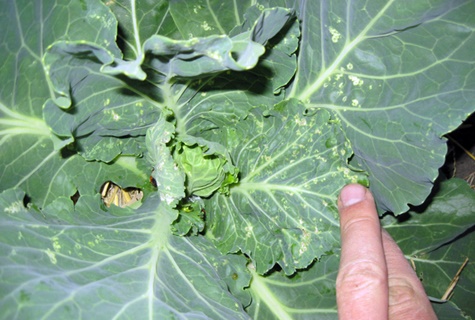
To combat aphids, drugs such as Iskra, Corsair, Karate are often used. It is useful to plant cabbage beds next to tomatoes and carrots. From folk remedies, infusions based on garlic and onions are considered effective. Insects don't like their smell.
Cabbage can be attacked by a cabbage fly. Insect about 6 mm in size, gray. The danger for the vegetable is the larvae that the fly lays in the soil. After a week, the larvae begin to eat the root system first, and then move on to eating the stems, making moves in them. White larvae reach 8 mm in length. In addition, they can cause the development of a viral, fungal or bacterial disease.
The appearance of the cabbage will tell you about the invasion of flies:
- the roots begin to rot and the plant is easily pulled out of the ground;
- leaves wither, grow poorly;
- the lower row of leaves darkens, acquires a grayish tint.
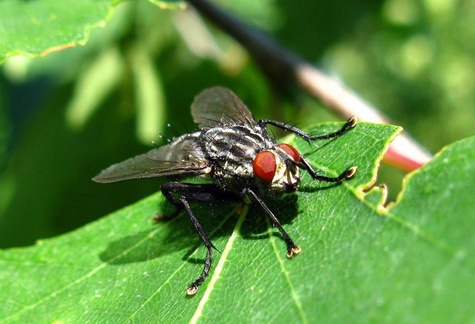
Chlorophos or Thiophos solution helps with cabbage fly, as well as drugs such as Corsair, Rovikurt. The people are trying to cope with the insect with a mixture of tobacco and lime.
A cabbage scoop can cause you to lose your entire cabbage crop in a matter of days.In the daytime, it hides in cabbage leaves, and with the onset of night it begins to be active. The insect looks like a butterfly, about 5 cm in size. The wings are light brown with white stripes and spots. The greatest danger is brought by the caterpillars of these butterflies. They are green with yellow stripes.
If a cabbage scoop is found, the beds should be treated with insecticides such as Sumicidin, Cyanox. To prevent the invasion of butterflies, you need to pick weeds in time and dig up the ground in the fall.


